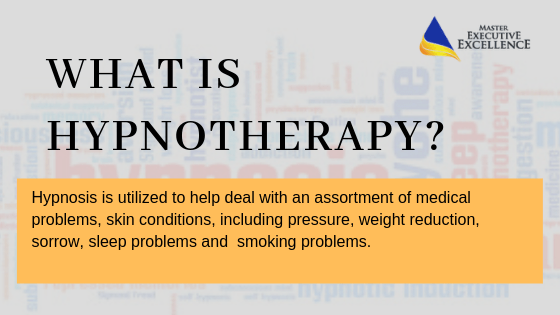
Stress hypnosis can be a type nLP therapy that assists people in overcoming mental and emotional obstacles to their well-being. It might not be suitable for everyone. This is a great way to reduce stress. Hypnosis can offer many benefits, and is a great choice for people of all ages.
Hypnosis may also be able to help you establish boundaries and adhere to a exercise program. You can use hypnosis to set boundaries and feel more confident. Hypnosis can be used to help you quit smoking, drinking alcohol or carrying around a cell phone. Hypnosis, like any other type of therapy, involves you entering a trance state and making suggestions for your subconscious mind.

Hypnosis is a great choice for stress relief because it relies only on your natural state of relaxation and doesn't rely on medication. Some anxiety and chronic stress medications have undesirable side effects and can even lead you to become dependent. Stress hypnosis can alleviate anxiety and anxiety without the need for pharmaceuticals. It calms your body and mind, decreasing stress and anxiety. It can be used in combination with focused breathing and other treatments.
Stress hypnosis can be a great way to reduce stress. It may not be the best option for all situations, but it can help with your problems and make life more enjoyable. There have been some studies that show hypnosis can reduce stress. It's worth spending the time to discover what this technique can do. This method can be used to improve your life and manage your symptoms. It is simple to get started and even easier with self-hypnosis scripts.
The hypnosis programme is designed to deal with the psychological effects that stress can have on your mind. It can reduce stress and anxiety by helping people to cope with their anxiety. It can reduce anxiety as well as improve performance. This technique can reduce stress and help people develop more rational cognitive responses to stressful situations. It's a great way to improve your quality life.

The therapist will guide you into hypnosis. During the hypnosis session, you will experience a deep state of relaxation and focused awareness. Your therapist will also be able to use various techniques to assist you in managing stress and improving your quality of living. The key to successful re-writing of the subconscious mind is that it is believable, and it will allow you to make positive choices.
FAQ
How much should I weigh for my height and age? BMI calculator & chart
Calculating your body mass index (BMI), is the best method to calculate how much weight to lose. A healthy BMI range should be between 18.5 and 24,000. Weight loss is possible if you aim to lose approximately 10 pounds per week. To calculate your BMI, simply enter your height and weight into the BMI calculator.
To see if you're overweight or obese, check out this BMI chart.
How to measure your body fat
The best way to measure body fat is with a Body Fat Analyzer. These devices are used for measuring the percentage of body fat in people who want to lose weight.
What should you eat?
Consume lots of fruits, vegetables. These vegetables and fruits are rich in vitamins and minerals that will keep your immune system strong. Additionally, vegetables and fruits are high fiber. This helps with digestion and keeps them full. At least five servings of fruits and vegetables should be consumed each day.
Water is essential for your body. Water flushes toxins from your body and helps you feel full between meals. Drink about eight glasses each day.
Whole grains are better than refined ones. Whole grains contain all of their nutrients, including B vitamins and iron. Refined grains lack some nutrition.
Sugary drinks should be avoided. Sugary drinks are full of empty calories and lead to obesity. Choose water, milk or unsweetened tea instead.
Avoid fast food. Fast food has little nutritional value. It may taste great but it won't give you the energy you need to function properly. Instead, stick to healthier options such salads and soups as well sandwiches and pasta.
Try to limit alcohol intake. Alcohol contains empty calories and contributes to poor nutrition. Limit the number of alcoholic beverages you consume per week to no more that two.
Reduce your consumption of red meat. Red meats can be high in cholesterol and saturated fat. You should choose lean cuts like beef, pork lamb, chicken and fish instead.
What's the problem in BMI?
BMI is the acronym for Body Mass Index. It measures body fat based upon height and weight. Here is how to calculate BMI using the following formula.
Weight in kilograms divided by height in meters squared.
The result is expressed in a number between 0 - 25. Scores between 0 and 25 indicate obesity. A score of 18.5 indicates overweight. A score of 23 indicates obesity.
A person of 100 kg with a height of 1.75m will have 22 BMI.
What are the top 10 healthy habits?
-
Eat breakfast every day.
-
Don't skip meals.
-
Eat a balanced, healthy diet.
-
Get plenty of water.
-
Take care of your body.
-
Get enough sleep.
-
Stay away from junk foods.
-
Do some form of exercise daily.
-
Have fun
-
Make new friends
How do I find out what's best for me?
You must listen to your body. Your body knows best when it comes to how much exercise, food, and rest you need. To avoid overdoing it, it's important that you pay attention to what your body is telling you. Pay attention to your body, and ensure that you are doing all you can to keep yourself healthy.
What is the difference between a virus and a bacterium?
A virus is an organism microscopic that can't reproduce outside its host cells. A bacterium is a single-celled organism that reproduces by splitting itself in two. Viruses are small, around 20 nanometers in size. Bacteria are much larger, at 1 micron.
Viruses spread easily through contact with infected bodily tissues, such as saliva and urine, semen, vaginal secretions or pus. Bacteria can be spread by direct contact with infected objects and surfaces.
Viruses may enter the body through cuts, scrapes. bites, or any other break in the skin. They can also penetrate the skin through the eyes, nose or mouth.
Bacteria can be introduced to our bodies by cuts, scrapes or burns. They may also be introduced into our bodies through food and water as well as soil, dirt, dust, and animals.
Both bacteria and viruses cause illness. However, viruses cannot reproduce within their hosts. They only cause disease when they infect living tissue.
Bacteria can cause illness by multiplying in the body. They can spread to other parts of our bodies. Antibiotics are needed to eliminate them.
Statistics
- According to the 2020 Dietary Guidelines for Americans, a balanced diet high in fruits and vegetables, lean protein, low-fat dairy and whole grains is needed for optimal energy. (mayoclinichealthsystem.org)
- The Dietary Guidelines for Americans recommend keeping added sugar intake below 10% of your daily calorie intake, while the World Health Organization recommends slashing added sugars to 5% or less of your daily calories for optimal health (59Trusted (healthline.com)
- WHO recommends consuming less than 5% of total energy intake for additional health benefits. (who.int)
- WHO recommends reducing saturated fats to less than 10% of total energy intake; reducing trans-fats to less than 1% of total energy intake; and replacing both saturated fats and trans-fats to unsaturated fats. (who.int)
External Links
How To
What does the meaning of "vitamin?"
Vitamins are organic compounds that can be found in foods. Vitamins are essential for our bodies to absorb nutrients from the foods we eat. Vitamins cannot come from the body so food must provide them.
There are two types if vitamins: water soluble, and fat soluble. Water-soluble vitamins dissolve easily when they are dissolved in water. Vitamin C,B1(thiamine), B2 (2riboflavin), and B3 (3niacin), as well as vitamin C,B1, B2 (riboflavin), and B3 (niacin), vitamin B6 (pyridoxine), vitamin folic acid (biotin), pantothenic, and choline are examples. Fat-soluble vitamins can be stored in the liver or in fatty tissue. Vitamin D, E, K and A are some examples.
Vitamins can be classified by their biological activity. There are eight main groups of vitamins.
-
A - Essential for healthy growth and health maintenance.
-
C - important for proper nerve function and energy production.
-
D - necessary for healthy bones and teeth.
-
E - needed for good vision and reproduction.
-
K - required for healthy muscles and nerves.
-
P – vital for building strong bones.
-
Q - Aids digestion and iron absorption
-
R - Required for red blood cell production
The recommended daily allowance of vitamins (RDA), varies according to age, gender, physical condition, and other factors. RDA values are set by the U.S. Food and Drug Administration (FDA).
For adults over 19 years, the RDA is 400 mg per day for vitamin A. Pregnant women require 600 micrograms daily to support fetal development. Children ages 1-8 require 900 micrograms per day. For infants younger than one year, 700 micrograms are required daily. However, this number drops to 500 micrograms each day for children aged 9-12 months.
Children between the ages of 1-18 need 800 micrograms per daily for obesity, while children overweight require 1000 micrograms. Children underweight or obese will need 1200 mg per day.
Children aged 4-8 years old who have been diagnosed as having anemia require 2200 micrograms of vitamin C per day.
2000 micrograms are required daily for good health in adults over 50. Breastfeeding or pregnant women require 3000 micrograms per daily due to higher nutrient demands.
Adults over 70 years of age need 1500 micrograms per day since they lose about 10% of their muscle mass each decade.
Women who are pregnant and lactating need more nutrients than the RDA. Pregnant and breastfeeding women require 4000 micrograms each day during pregnancy and 2500 Micrograms each day after delivery. Breastfeeding mothers need 5000 micrograms per day when breast milk is being produced.